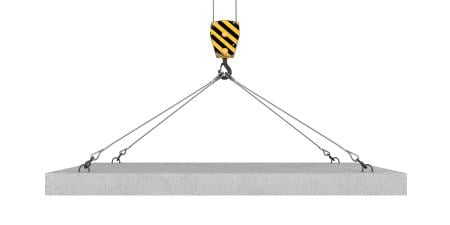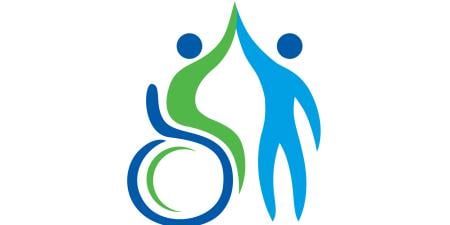Lizzy, age 7 months, had just been identified as deaf, and her parents were preparing to make decisions regarding communication choices for her, such as whether to pursue cochlear implants or teach her sign language. Lizzy’s parents were encouraged to attend a workshop on decision making in deafness by her early intervention clinician. When they sat down at the first session and looked around, they saw many deaf and hard of hearing (D/HH) people in the audience signing to one another. Lizzy’s mother couldn’t help herself—privately, her first feeling was grief. She thought, “This has nothing to do with our daughter, with our family.” How could her daughter be part of something that felt so foreign to her?
As she looked up on the stage, there was one person speaking and an individual next to the speaker signing. “Ah, they must have an interpreter up on stage,” the mom surmised. As she focused her attention on the speaking person, however, she gradually became aware that the presenter was in fact the person who was signing, and the interpreter was voicing for that person. She had just assumed that the presenter was the hearing, speaking individual.
The description of the school was also a surprise to Lizzy’s parents. For the all-deaf student body, accessibility was provided through visual communication (paging systems, captioning, and sign language). For the first time, Lizzy’s parents could visualize a world in which deaf people could thrive, not defined by the “deficit” of living in the world without the sense of hearing.
When those around them learned they were undertaking this process, everyone seemed to have opinions they weren’t shy about sharing:
“If you sign to your child, she will never speak.”
“If you don’t sign to your child, she will grow up to hate you and turn from your family to Deaf culture and community.”
“Your daughter has a right to her natural language: ASL.”
“It’s a hearing world, and you need to be hearing to make it through.”
All this only made the decision seem weightier and more daunting. What was the right decision? Was there a “right” choice? Whose choice was it to make?
Responsibilities Facing Parents of Children with Deafness or Hearing Loss
The implementation of universal newborn hearing screening, with the result that more than 97 percent of infants are now screened for hearing loss in the US [1], as reported in 2013 by the Center for Disease Control (CDC), and has created a new generation of deaf and hard of hearing (D/HH) children whose hearing loss is identified earlier than ever before. Because research shows that infants who receive early intervention by six months of age show better language outcomes than children who do not [2], there is pressure to begin intervention quickly. With the advent of cochlear implants (devices surgically implanted behind the ear with an electrode thread into the cochlea), there has been an increase in implantation of younger children and of infants as young as 12 months. But families need time to develop well-informed choices regarding language, communication, methodology (e.g., cued speech, listening and spoken language [LSL] therapies, different signing systems), and technology use—including the use of cochlear implants—and, if they have not had much exposure to deafness, time for their perceptions to evolve. Indeed, the great majority—90 to 95 percent—of deaf and hard of hearing children are born to hearing parents [3]. Generally speaking, these parents have no prior experience with deafness or hearing loss [3], and they are asked to make definitive, often life-altering choices for their D/HH children.
Pressure on Parents
Decision making regarding communication and language choices for children often weighs heavily on parents. This is true for both medical decisions—in the case of cochlear implantation—and/or nonmedical decisions, such as incorporating the use of sign language. This decision making usually takes place within the first few months postdiagnosis, a time of intense vulnerability for parents, as “experts” in the field (e.g., medical practitioners, linguists, early intervention providers, deaf/hard of hearing individuals) hold strong opinions about what the “best” path for D/HH children might be in terms of language and communication acquisition. The “war on communication choices” for deaf people has been carried on for generations in political, moral, educational, and clinical contexts. In my experience, parents are often at the center of this vortex of debate, and many people feel they have a right or an obligation to tell parents what is best for their D/HH children.
Historically, there seem to me to have been two primary viewpoints on deafness. In one, deafness is viewed as pathological, a medical condition or disability, and in the other deafness is embraced as a cultural difference, something to be celebrated [4]. (Deaf culture is often defined as the set of social beliefs, behaviors, art, literary traditions, history, values, and shared institutions of communities that are influenced by deafness and that use sign languages as the main means of communication.) These viewpoints have traditionally been very binary (implants or signing, etc.). The fact is, however, many families may choose to seek medical intervention for their children while at the same time beginning to explore the social, educational, and cultural implications of those choices. The quality and quantity of information a family needs to form their own sense of what this experience means for them and their child comes from a variety of sources. The cultural identity and belief system of a family influences and gives meaning to this process.
In recent years, experts’ views have evolved to include the idea that parents don’t need to make a “choice” between spoken or signed language but can incorporate both—some form of bilingualism—into a child’s development [5]. Signing, speaking, and a combination of the two are all viable options that can lead to success for D/HH children, depending on the individual child. According to an analysis of 181 research studies on language development in children who are deaf, researchers “have not yet found the approach that supports development across the domains of social functioning, educational achievement, and literacy. A single such approach is unlikely” [6].
The journey a family goes through upon discovering that a child has hearing loss is a distinctly personal one, leading to choices that others probably should not judge. Parents have moral and legal authority and responsibility to make decisions on behalf of their children and the right to exclude others from such decision making. It should not be assumed, just because parents of a deaf child are hearing, that their decisions will be based on wanting their children to also be hearing. Families who do choose spoken language for their children are not denying who their deaf children are, but are seeking good communication and language skill development options for their particular child and have a right and an obligation to do so. One Deaf woman recently suggested this important distinction between her hearing and her self: “I wish that I had understood from the beginning that the Cochlear Implant changed the way I heard, but did not change who I am.”
For Parents and Clinicians
Hearing parents of children who are D/HH must evolve in their understandings of hearing loss to make good decisions on behalf of their children, as well as monitoring the needs of their own children, their own beliefs and desires, and ways of assessing and interpreting their child’s progress in language and communication.
Families may begin to understand, embrace, and delight in their deaf children who are different from them, including adopting a new language (American Sign Language and/or other visual signing systems) outside the context of their culture and family.
Parents’ decision making is an evolving dynamic that requires time, as well as knowledge and understanding of—and support for—their own child’s makeup and propensities. There is a vast amount of information and knowledge, both personal and expert, a family needs in order to make effective choices for their child who is D/HH. These sources of information often come from other families of children who are D/HH [7], members of the Deaf and hard of hearing communities, educational institutions, and medical professionals with specific expertise in the field of deafness. Input from multiple sources allows the family to obtain a diversity of needed perspectives, expertise, and values to create a balanced, viable system of support for attaining successful outcomes for children.
Ultimately, while parents have rights and obligations to make choices for their young children, the journey is not entirely within the realm of parental control and evolves as the child grows. Parental rights and obligations seem naturally to lessen in strength and scope as children gain decision-making ability [8]. As the author of The Parenting Journey: Raising Deaf and Hard of Hearing Children, Karen Putz, notes, “Sometimes on the course of the journey…the path changes in ways we can’t imagine. As our kids get older, they begin to weigh in on our decisions and make decisions of their own. Sometimes their decisions go against everything we’ve known” [9].
Families value professionals who know how to explain medical and technological options while also honoring the realization that parents are the ultimate decision makers for their child. This delicate balance can be a challenge for professionals who are trained in the “craft” of service provision but usually not given explicit training in the more esoteric art of “family support.” Professionals who have the ability to incorporate dynamic family support into direct service provision congruently create a structure for a meaningful partnership with the families they are serving.
An important point for families is that they need to quickly become knowledgeable in an arena that is new and sometimes overwhelming. Families must know and understand the unique needs of children who are deaf or hard of hearing and apply that general knowledge to their own children, families, and community. In the end, when parents are given good support and make decisions for their own child, that child has a wonderful chance of fulfilling her or his own—and his or her family’s—hopes and dreams for a meaningful life.
References
-
Centers for Disease Control and Prevention. Hearing loss in children: data and statistics. Updated December 18, 2015. http://www.cdc.gov/ncbddd/hearingloss/data.html. Accessed February 29, 2016.
- Yoshinaga-Itano C, Sedey AL, Coulter DK, Mehl AL. Language of early- and later-identified children with hearing loss. Pediatrics. 1998;102(5):1161-1171.
- Mitchell RE, Karchmer MA. Chasing the mythical ten percent: parental hearing status of deaf and hard of hearing students in the United States. Sign Lang Stud. 2004;4(2):138-163.
- Sparrow R. Defending Deaf culture: the case of cochlear implants. J Polit Philos. 2005;13(2):135-152.
-
Napoli DJ, Mellon NK, Niparko JK, et al. Should all deaf children learn sign language? Pediatrics. 2015;136(1):170-176.
-
Marschark M. Language development in children who are deaf: a research synthesis. Alexandria, VA: National Association of State Directors of Special Education; June 4, 2001:39. http://www.nasdse.org/DesktopModules/DNNspot-Store/ProductFiles/157_6562b22b-8934-4062-a42b-e46400be157c.PDF. Accessed February 29, 2016.
-
Hands & Voices website. http://www.handsandvoices.org. Accessed February 29, 2016.
-
Ross LF. Children, Families, and Health Care Decision Making. Oxford, UK: Clarendon Press; 2002.
-
Putz K. The Parenting Journey: Raising Deaf and Hard of Hearing Children. Cambridge, MA: Barefoot Books; 2012:55.



